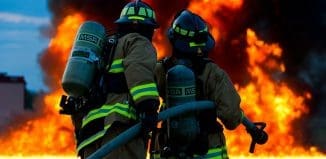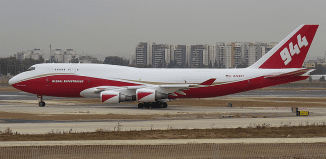Fire Fighting: Container Training
This post is also available in:  עברית (Hebrew)
עברית (Hebrew)

Thanks to advancements in building codes, public education and fire prevention technology, the modern fire service responds to fewer structure fires. While this is obviously a positive evolution, one unfortunate consequence is that today’s responders do not get as much field experience with fire as they used to. This means fewer opportunities to build a skillset to combat the many variables that accompany present-day fires.
New Fire Threats
In the days of primarily wood-based construction, flashovers rarely happened. Heavy timber made for good support and cedar shingles allowed for burnout through the roof. Today, construction materials are far more lightweight and synthetic materials are abundant. So while modern advancements have lessened the frequency of fires, modern materials have made the intensity of those fires far greater.
Modern construction designs to save energy limit ventilation points, which in turn supports build-up of super-heated gases. This means that fire will spread rapidly once it starts, producing intense heat and a higher amount of extremely toxic chemicals. If you’ve never seen a flashover, it is striking how fast a small spark can turn a common item like a couch into an intense inferno.
Advances in PPE offer better protection that allows firefighters to go deeper into structure fires, but that extra protection can sometimes give a false sense of security, ultimately leading firefighters into harm’s way. This makes it all the more important that modern firefighters protect themselves with the knowledge that comes from studying the characteristics of fire.
Container Training
For the purpose of training firefighters, the ideal situation would include regular calls for structure fires that all take place in a safe, contained environment conducive to education. This is far from realistic, of course, so departments opt for the next best thing—container training.
Though some may frown on them at first glance, training containers are not just big metal boxes with stacks of burning wood inside. Container systems often have one or more burn areas, referred to as the burn box. A burn box is the 8′ section of the container that holds the burnable fuel loads and is reinforced to withstand extremely high temperatures. More importantly, the design of the burn box helps replicate the conditions of a real structure fire, only on a smaller scale. Typically, plywood or oriented strand board (OSB) is used as the primary fuel, and the walls and the ceiling are lined with it as well. This serves a dual purpose: 1) lining the walls with the material instead of stacking pallets or hay in the middle of a room helps protect the integrity of the structure; and 2) this configuration puts the fuel on all surfaces, which is much closer to reality than a simple stack of wood.
iHLS – Israel Homeland Security
Each burn box is also equipped with a modified barrel that holds what is called the “crib” fire. The crib acts as the seat of the fire, which means it is both the ignition point and the heat source for the entire evolution. In a very real sense, the crib is the engine of any burn session.
Class A (or wood-fueled) containerized training platforms utilize a cumulative, or phased, approach to fire training. Though the preferred fuel is OSB on every surface, Class A systems can utilize other materials such as wood pallets, hay or paper as the primary fuel source for the fire. One of the biggest benefits of Class A fire and smoke is that it behaves the same way it would at a real structure fire, so the training is very true to reality. Specifically, Class A systems provide real flashover experiences for firefighters in a controlled environment. Participants are able to identify and study the traits of a burn that lead to flashover.
The Value for Firefighters
Today’s responders are spending less time fighting real fires, yet modern building materials make fires more dangerous than ever. That means that today’s firefighters need training that teaches them more than just “how to put the cold stuff on the hot stuff.”
Firefighters need the knowledge, confidence and experience that comes from training on realistic fires and learning in conditions they might encounter on a real call. They need training that teaches them the language of fire and smoke behavior. The safe and consistent lessons provided by container training ensure that every participant can witness the conditions that may threaten their life, and develop strategies to help protect them in the line of duty.
Source: firefighternation.com






























